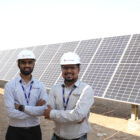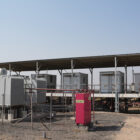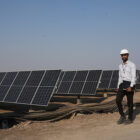The Importance of Regular Maintenance for Solar Energy Systems
Solar energy systems are widely recognized for their durability, low operating costs, and environmental benefits. However, like any other piece of equipment exposed to the elements and running continuously, solar systems require regular maintenance to perform at their best. Neglecting maintenance can result in reduced efficiency, unexpected failures, and ultimately, a lower return on investment (ROI). Regular maintenance is essential to ensure long-term performance, safety, and financial viability of solar energy assets.
Preserving System Efficiency
One of the most immediate benefits of regular maintenance is the preservation of energy efficiency. Over time, dust, dirt, bird droppings, and other environmental contaminants can accumulate on solar panels, significantly reducing their ability to absorb sunlight. Even a small layer of grime can decrease output by 10–20%. Regular cleaning ensures panels remain clear and fully operational, maintaining optimal energy production levels.
Additionally, electrical components such as inverters, wiring, and connectors are subject to wear and tear. Loose connections, corrosion, or thermal damage can lead to partial system failures or efficiency losses. Scheduled inspections can detect and correct these issues early, preventing small problems from becoming major setbacks.
Extending System Lifespan
Solar panels and related hardware are built to last 25 years or more, but this longevity depends heavily on how well they are maintained. Regular checks of mounting structures, cabling, batteries (in off-grid systems), and monitoring systems help prevent physical damage and performance degradation. By identifying potential faults early, maintenance prevents excessive strain on components, ensuring they reach or even exceed their expected lifespan.
Reducing Downtime and Repair Costs
Unexpected equipment failures can lead to system downtime and reduced energy generation, which directly affects profitability, especially in commercial and utility-scale installations. Regular maintenance minimizes these risks by identifying vulnerabilities before they result in breakdowns. Preventive maintenance is far more cost-effective than reactive repairs and reduces the likelihood of expensive emergency service calls.
Ensuring Safety and Compliance
Solar energy systems deal with high voltage electricity and are often installed in exposed locations. Faulty wiring, damaged panels, or compromised connections can pose safety hazards, including fire risks. Routine maintenance includes safety inspections that ensure all system components are functioning properly and comply with relevant safety standards.
Moreover, many equipment warranties and insurance policies require proof of regular maintenance. Failure to perform scheduled checks could void warranties and reduce insurance coverage in the event of system damage.
Maintaining Optimal Financial Performance
Ultimately, regular maintenance is key to maximizing the financial return on a solar investment. By ensuring peak performance, minimizing downtime, and reducing unexpected costs, maintenance protects both the energy output and the revenue generated from the system. For residential users, this means lower utility bills. For businesses and investors, it means stronger ROI and asset reliability.
Conclusion
Regular maintenance of solar energy systems is not a luxury—it is a necessity. Whether for residential rooftops or large-scale solar farms, consistent care ensures efficiency, longevity, safety, and financial performance. As the solar industry continues to grow, maintenance will remain a critical factor in unlocking the full value of clean energy.








